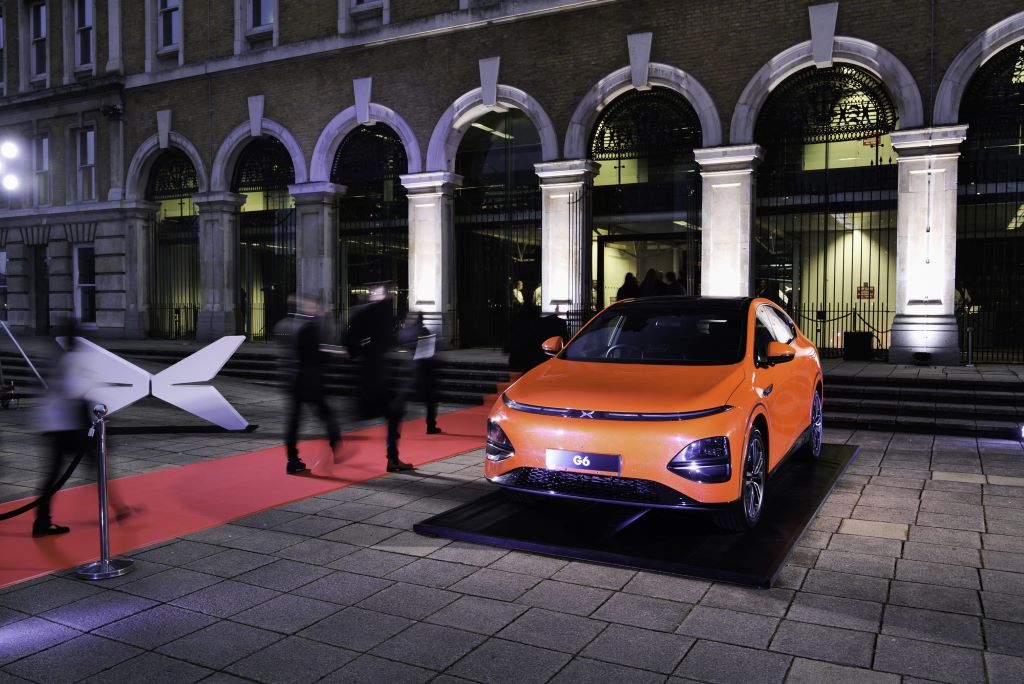Feature 8 min read
Interview with Sakuu CEO, Robert Bagheri
Sakuu Corporation (formerly KeraCel) recently unveiled a unique new 3D printing platform that it hopes will unlock the mainstream adoption of electric vehicles by overcoming some of the inherent barriers currently standing in the way of greater commercial uptake. We caught up with the CEO, Robert Bagheri, who gave us his insight into what his company’s new technology proposition will mean for e-mobility companies, battery manufacturers and ultimately consumers.
Sakuu recently raised a few interested eyebrows when you launched your new additive manufacturing platform – can you tell us a bit about this and who you are targeting?
We have just introduced a revolutionary new industrial-grade 3D printer – the Sakuu AM Platform, which is the world’s first and only multi-material, multi-process 3D printer. This allows us to 3D print completely different multi-materials – including ceramics and metal – in a single layer capability, enabling the easier and faster creation of functional devices with internal channels and cavities. In a nutshell, this scalable platform will open up the capability for faster, more-cost effective production of complex active devices at industrial rates.
Our initial application area is solid state batteries (SSBs) for the e-mobility market, thanks to the way in which our production process directly addresses and overcomes some of the most inherent problems with the manufacture of such batteries. Specifically, our short-term focus is on the two-, three- and smaller four-wheel electric vehicle market and we already have partners actively sampling our SSBs for these vehicles. These partners include Honda-affiliate, Musashi Seimitsu.
Staying with solid-state batteries, what advantages does your production process offer battery and e-mobility companies?
We are changing completely the way in which SSBs are constructed and manufactured. Right now, they are a holy grail technology, but a major setback is that they are very difficult to make. Our Sakuu AM Platform eradicates the shortfalls inherent with existing alternatives – typically low energy density SSBs that are unsuitable for high-volume production and characterised by thick, brittle ceramic layers and poor interface. By harnessing the flexibility and efficiency-enhancing capabilities of our 3D printing process, we are enabling battery manufacturers and EV companies to overcome these pain points and produce higher energy density SSBs with thin monolithic layers and perfect interface.
Another important consideration is that our SSBs (which will be KeraCel™ – branded) will use around 30-50 per cent fewer materials. These can also be sourced locally, significantly reducing production costs.
Insofar as production quantities, our platform will be able to deliver 180,000 18650 type batteries every month (at 90 per cent utilisation). The agility of our AM process also means that, if desired, customers can easily switch production to create different battery types and sizes – for example to achieve double the energy in the same space or the same energy in half the space.
Sounds impressive. What benefits will this deliver compared to lithium-ion batteries – especially with foremost issues like cost and range?
Our platform enables fast and high-volume production of 3D printed SSBs that, compared to lithium-ion batteries offer some crucial advantages. As I mentioned previously, we can deliver twice the energy capacity as we’re packing 1,200 watts per litre in the same volume size. Or if we keep the same energy density, the cost will be halved because the size is halved.
Looking at Tesla’s example puts some context on this. They use 8000 batteries and it gives them 500km (310 miles) range. Our platform will provide double the range with the same number of batteries, or as an alternative e-mobility companies could get the same range on half the number of batteries.
Taking all that into account, it was logical for us to start with the two-, three- and smaller four-wheel EV market because our SSB proposition delivers an obvious and desirable combination of small form factor, low weight and improved capacity benefits.
In addition to this, a major reason why SSBs are praised so highly is by how they overcome safety risks that are prevalent in lithium-ion batteries, by excluding flammable materials. This ultimately enables the implementation of ultra-fast charging technology, without the danger of battery fires. The sooner we can get SSBs implemented into EVs, the sooner common consumer worries surrounding EVs, like range anxiety, can be eliminated.
Increased e-mobility options certainly support continued efforts for cleaner driving as part of the wider objective to help the environment, but recyclability of EV batteries continues to raise concerns. How does you proposition measure up in this regard?
This is an important issue for us, and I’m pleased to say that we can demonstrably offer improved sustainability benefits. First of all, we’re dealing with only half the level of materials to begin with, and everything we are creating is done so in powder form, so it is all recyclable. This powder-to-powder process means that once a KeraCel™ battery is at the end of its life, we can reclaim almost all of the materials. Unlike the case with lithium-ion options, there is no requirement to extract graphite and the absence of polymer means no incineration or burial in landfill. All in all, this ensures a recycling process of ceramics and metals, that is both cheaper and easier compared to conventional methods.
The ongoing COVID-19 pandemic has proven that traditional supply chains can be quickly disrupted, which can spell bad news for manufacturers and their customers. How does your offering support the continued drive towards shorter supply chains?
I think our proposition alleviates disruption for active device manufacture in many ways. Fundamentally, since the production process itself is based on 3D printing, users are harnessing the agility inherent within that technology – which enables localised, on demand manufacturing. That means digital 3D print files can be sent around the world or pulled from a virtual inventory, so that SSBS or other functional devices can be printed where they are needed.
Via our technology proposition, and the fact that materials can be sourced locally rather than from faraway countries, like China, we’re granting users the agility and self-sufficiency to operate ’local’ factories. This ultimately helps drive more efficient production operations and shorter supply chains, which spells great news for manufacturers at any time – not just when they’re dealing with a pandemic or geo-political issue that could significantly impact them.
It sounds like you’re ticking some important boxes. What do you think all that means insofar as changing consumer adoption towards EVs?
EVs and other e-mobility vehicles are not a passing fad. With governments around the world constantly seeking more planet-friendly methods of travel to reduce emissions, these vehicles are another necessary solution towards supporting this ongoing quest. So, they’re here to stay and gradually we will see a greater uptake among consumers, in parallel with an increased discouragement by governments for ‘dirty’ fuelled cars – as we’re already seeing with diesel vehicles and older less economical petrol cars.
For this uptake to increase, a few things need to happen. First, the range of EVs needs to increase – range anxiety is very much a pain-point that remains an issue for many consumers. This is something that e-mobility manufacturers need to look at, especially when you consider that not everyone lives in towns or cities, and so do not have easy access to charging stations. Secondly, the cost of EVS is also an issue; they’re too expensive for many consumers to own, let alone upkeep, which coupled with the range problem makes for an important combination that wields a lot of weight insofar as influencing the buying decision.
Thanks to the way in which Sakuu is addressing these crucial issues, I do think our own technology will support an acceleration to greater uptake by making EVs more accessible.
Be that as it may, some experts are suggesting that full uptake of EVs won’t occur until 2030 at the earliest, with some even predicting 2040 as more likely – what’s your own view on this?
Certainly, based on the current situation, SSBs as they are now will likely be only ready to begin implementation into vehicles by 2030. But I believe that our AM platform will speed up the entire process, so for me, full adoption of EVs via very high-volume sales could occur by 2025/2026.
I am encouraged by the direction in which many major automakers are moving in their commitments towards phasing out diesel options and gradually bringing EV alternatives into their ranges. We saw this again just recently when Ford unveiled its new F-150 Lightning EV. Who would have thought that, even just a few years ago, America’s biggest selling truck would ultimately be available as an EV?
Indeed, the times they are a-changin’. Have you anything else to add before we let you go?
I would like to emphasize that, as a cheaper, faster, local, customisable and more sustainable method of producing SSBs – which as a product deliver much higher performance than currently available alternatives – we expect the potential of our new platform to offer tremendous opportunities to the e-mobility market.
But while SSBs for EVs are our focus in the immediate timeframe as an application that clearly demonstrates our technology capability, they are just the start. Beyond energy storage, our ability to harness true multi-material-in-a-single-layer print capability opens complex end device markets previously closed off to current 3D printing platforms. These include active components like sensors and electric motors for aerospace and automotive; power banks and heatsinks for consumer electronics; PH, temperature and pressure sensors within IoT; and pathogen detectors and microfluidic devices for medical, to name a few.
We’re very excited about what this new and unique proposition is delivering and the way in which it could transform manufacturing as we know it.


 Close-up of the Sakuu AM Platform
Close-up of the Sakuu AM Platform  Sakuu’s KeraCel™ SSBs can be produced easier, faster and less expensively than other SSBs, while also offering the added benefit of better and easier recyclability
Sakuu’s KeraCel™ SSBs can be produced easier, faster and less expensively than other SSBs, while also offering the added benefit of better and easier recyclability  Sakuu’s new AM process enables localized manufacturing, which means greater agility, shorter supply chains and the ability to enjoy higher production volumes
Sakuu’s new AM process enables localized manufacturing, which means greater agility, shorter supply chains and the ability to enjoy higher production volumes  Sakuu’s AM Platform is scalable – providing an ‘engine’ that can grow in tandem with the needs of e-mobility manufacturers, enabling them to respond to the changing needs of the platform/market
Sakuu’s AM Platform is scalable – providing an ‘engine’ that can grow in tandem with the needs of e-mobility manufacturers, enabling them to respond to the changing needs of the platform/market 



1024px.jpg)



Comments (0)
Be the first to write a comment
Login/ Signup